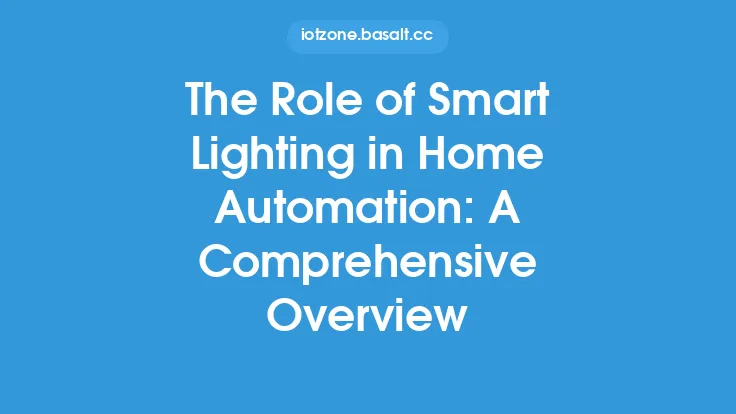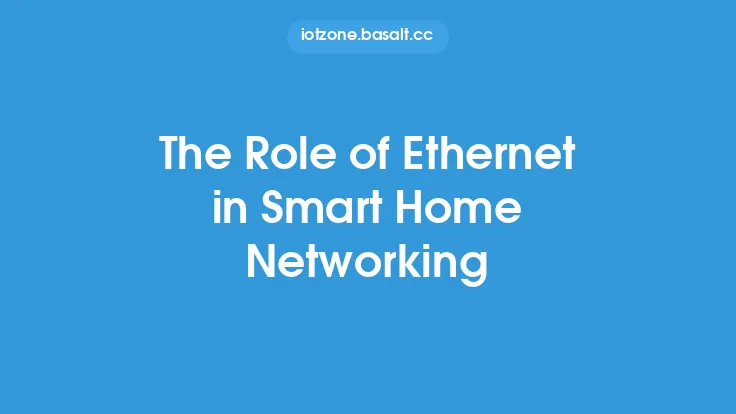The concept of geofencing has been around for several years, but its application in smart thermostat automation is a relatively new and exciting development. Geofencing refers to the use of GPS or other location-based technologies to create a virtual boundary around a specific geographic area. In the context of smart thermostats, geofencing allows homeowners to automate their temperature control systems based on their physical location. This means that when a homeowner leaves or enters their home, their smart thermostat can automatically adjust the temperature to optimize energy efficiency and comfort.
How Geofencing Works in Smart Thermostats
Geofencing in smart thermostats typically works by using the location data from a homeowner's smartphone or other mobile device to determine when they are approaching or leaving their home. This data is then used to trigger specific temperature adjustments, such as turning down the heat when the homeowner leaves the house or turning it back up when they return. The geofencing feature is usually set up through the smart thermostat's mobile app, which allows homeowners to define their home's geographic boundaries and customize their temperature preferences.
Technical Requirements for Geofencing
To implement geofencing in a smart thermostat, several technical requirements must be met. First, the smart thermostat must be connected to the internet, either through a wired or wireless connection. This allows the thermostat to communicate with the homeowner's mobile device and receive location data. Second, the homeowner's mobile device must have location services enabled, which allows the device to transmit its location data to the smart thermostat. Finally, the smart thermostat must have geofencing software or firmware that can interpret the location data and trigger the desired temperature adjustments.
Benefits of Geofencing in Smart Thermostats
The benefits of geofencing in smart thermostats are numerous. For one, it can help homeowners save energy and reduce their utility bills. By automatically adjusting the temperature when the homeowner is away, geofencing can help minimize heat loss and reduce the strain on the heating and cooling system. Geofencing can also enhance comfort by ensuring that the home is at a comfortable temperature when the homeowner arrives. Additionally, geofencing can provide homeowners with peace of mind, as they can rest assured that their temperature control system is working efficiently and effectively, even when they are not physically present.
Geofencing Algorithms and Techniques
The geofencing algorithms and techniques used in smart thermostats can vary depending on the manufacturer and model. Some common techniques include cell ID (CID) based geofencing, which uses the cell ID of the homeowner's mobile device to determine their location, and GPS-based geofencing, which uses the GPS coordinates of the device to determine its location. Some smart thermostats may also use Wi-Fi-based geofencing, which uses the Wi-Fi network to determine the device's location. The choice of geofencing technique will depend on the specific requirements of the smart thermostat and the homeowner's preferences.
Limitations and Challenges of Geofencing
While geofencing can be a powerful tool for automating smart thermostats, there are several limitations and challenges to consider. One of the main limitations is the accuracy of the location data, which can be affected by factors such as GPS signal strength and Wi-Fi network coverage. Additionally, geofencing may not work well in areas with poor cellular or Wi-Fi coverage, which can limit its effectiveness. Another challenge is the potential for false triggers, which can occur when the geofencing algorithm mistakenly detects the homeowner's location. To overcome these challenges, smart thermostat manufacturers must continue to develop and refine their geofencing algorithms and techniques.
Real-World Applications of Geofencing in Smart Thermostats
Geofencing is being used in a variety of real-world applications, from residential homes to commercial buildings. For example, some smart thermostat manufacturers offer geofencing as a standard feature in their products, while others offer it as an optional upgrade. Geofencing is also being used in conjunction with other smart home technologies, such as security systems and lighting control systems, to create a seamless and integrated home automation experience. As the technology continues to evolve, we can expect to see even more innovative applications of geofencing in smart thermostats and other smart home devices.
Future Developments and Trends
The future of geofencing in smart thermostats is exciting and rapidly evolving. One trend is the increasing use of machine learning and artificial intelligence (AI) to improve the accuracy and effectiveness of geofencing algorithms. Another trend is the integration of geofencing with other smart home technologies, such as voice assistants and home automation hubs. We can also expect to see the development of more advanced geofencing features, such as multi-user support and customizable geofencing zones. As the technology continues to advance, we can expect to see even more innovative applications of geofencing in smart thermostats and other smart home devices.





